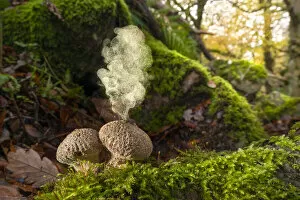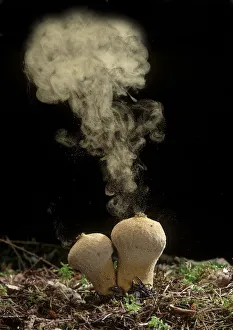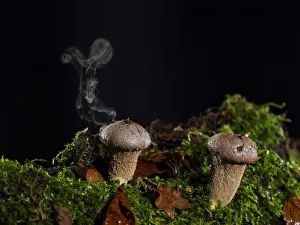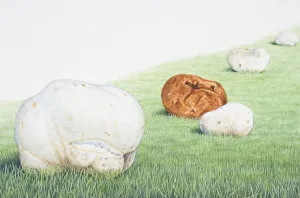Lycoperdaceae Collection
Lycoperdaceae, commonly known as puffball fungi, are fascinating organisms that release spores into the air
All Professionally Made to Order for Quick Shipping
Lycoperdaceae, commonly known as puffball fungi, are fascinating organisms that release spores into the air. One such species is Apioperdon pyriforme, also called the Common Puffball fungus. As it emits its spores, a mesmerizing sight unfolds before our eyes. Another member of the Lycoperdaceae family is Lycoperdon perlatum, another Common Puffball fungus. This species too releases its spores into the air, contributing to nature's cycle of life and reproduction. In Ringwood, Hampshire, England, UK, we can witness the enchanting display of Stump puffballs (Lycoperdon pyriforme) releasing their spores. These unique fungi grow on moss-covered tree stumps and add a touch of magic to their surroundings. Amongst grasses in various locations around the world including Italy and England, we find Lycoperdon perlatum - Common Puffball mushrooms fruiting abundantly. Their presence among these landscapes adds beauty and diversity to our natural habitats. Moving on to Calvatia gigantea or Giant Puffball mushrooms; these football-shaped wonders grace fields with both ripe white ones that are edible and older brown ones that are inedible but equally intriguing. They stand tall as they fruit in Cheshire fields during September. Italy becomes home to more Stump Puffballs (Lycoperdon pyriforme), where they thrive in deciduous woodland habitats during November. Here they continue their lifecycle by emitting spores after being hit by raindrops – an extraordinary phenomenon indeed. The Mosaic Puffball (Calvatia utriformis) finds solace on heathy grasslands within New Forest National Park in Hampshire County during September. Its fruiting bodies contribute to this diverse ecosystem while adding splashes of color amidst greenery.







